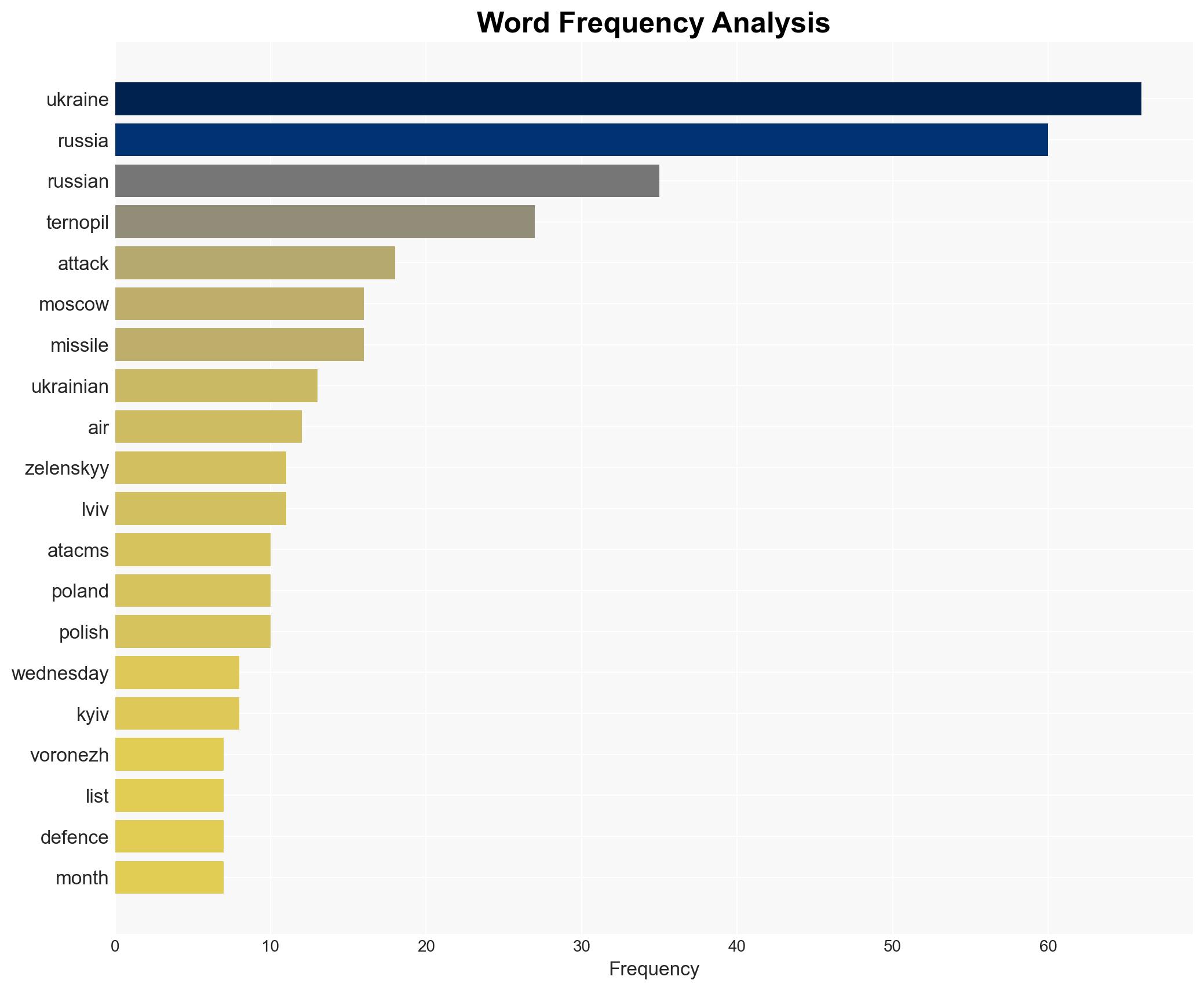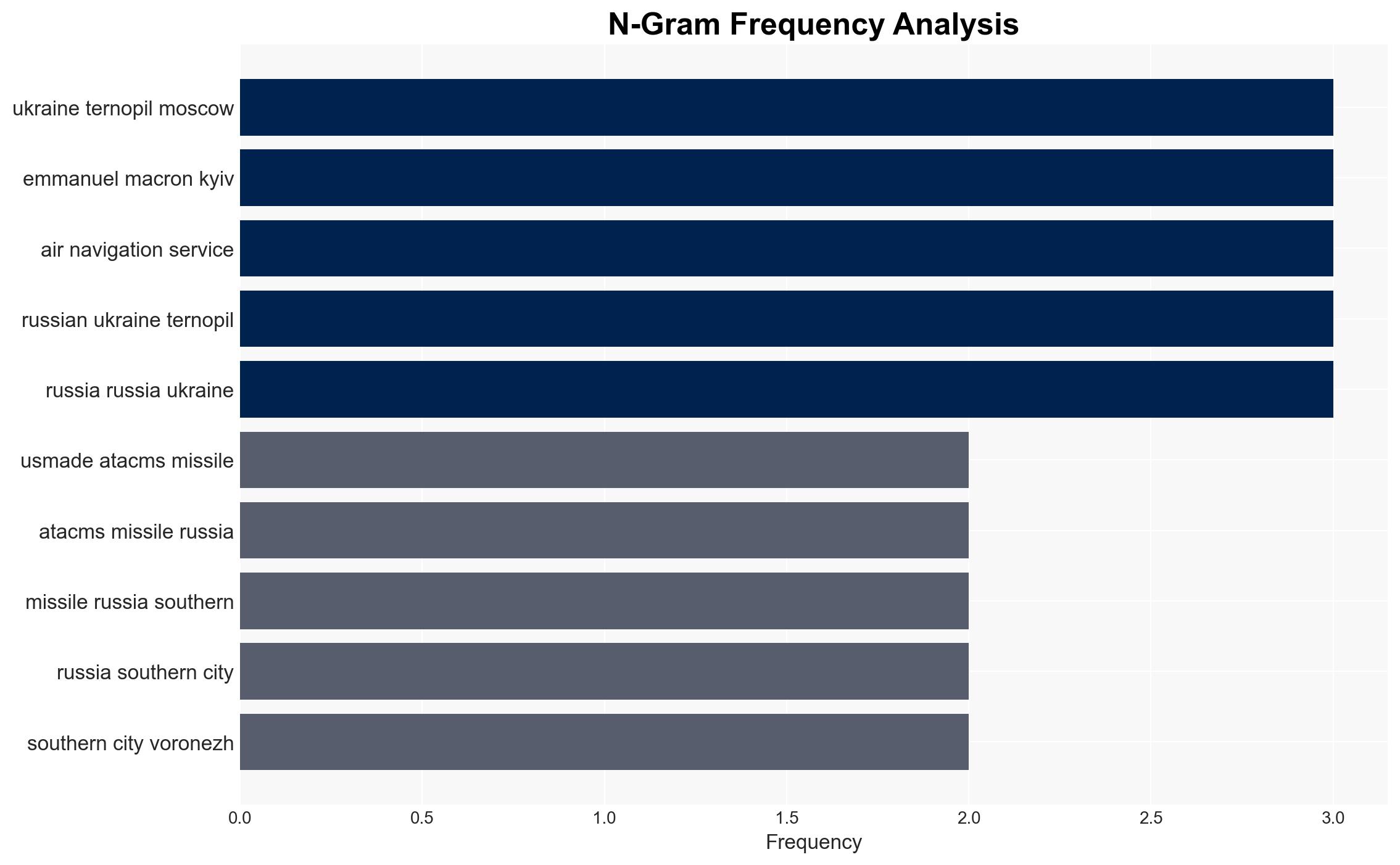At least nine killed dozens injured in Russian attacks across Ukraine – Al Jazeera English
Published on: 2025-11-19
AI-powered OSINT brief from verified open sources. Automated NLP signal extraction with human verification. See our Methodology and Why WorldWideWatchers.
Intelligence Report:
1. BLUF (Bottom Line Up Front)
The most supported hypothesis is that Russia’s intensified attacks on Ukraine are a strategic move to weaken Ukraine’s infrastructure and civilian morale ahead of winter, while simultaneously testing Western resolve and response capabilities. Confidence level: Moderate. Recommended action: Strengthen Ukraine’s air defense systems and enhance diplomatic efforts to maintain and increase international sanctions on Russia.
2. Competing Hypotheses
Hypothesis 1: Russia is escalating attacks to degrade Ukraine’s infrastructure and civilian morale, aiming to force concessions in ongoing diplomatic negotiations.
Hypothesis 2: Russia’s actions are a response to perceived threats from Ukraine’s use of advanced weaponry, such as US-made ATACMS missiles, and are intended to deter further military support from Western allies.
Hypothesis 1 is more likely due to the timing of the attacks coinciding with diplomatic engagements, such as President Zelenskyy’s visit to Turkiye, and the strategic targeting of energy infrastructure as winter approaches.
3. Key Assumptions and Red Flags
Assumptions: Russia has the capability and intent to sustain prolonged attacks on Ukraine’s infrastructure. Western nations are willing to continue supporting Ukraine with military aid.
Red Flags: Potential misinformation regarding the effectiveness of sanctions and the actual impact on Russia’s military capabilities. Possible exaggeration of Ukraine’s military successes to maintain Western support.
4. Implications and Strategic Risks
The escalation of attacks could lead to increased civilian casualties and humanitarian crises, potentially drawing more direct involvement from neighboring countries like Poland. There is a risk of cyber attacks targeting critical infrastructure in Ukraine and allied countries. Economically, prolonged conflict could strain European energy supplies, especially if Russian attacks disrupt Ukrainian transit routes.
5. Recommendations and Outlook
- Enhance Ukraine’s air defense capabilities through expedited delivery of advanced systems from Western allies.
- Increase diplomatic pressure on Russia through coordinated international sanctions and isolation efforts.
- Best-case scenario: Diplomatic negotiations lead to a ceasefire and de-escalation of hostilities.
- Worst-case scenario: Full-scale escalation involving NATO countries, leading to broader regional conflict.
- Most-likely scenario: Continued attritional warfare with periodic escalations and sustained international support for Ukraine.
6. Key Individuals and Entities
Volodymyr Zelenskyy, Emmanuel Macron, Maksym Kozytskyi, Oleksiy Goncharenko.
7. Thematic Tags
Regional Focus, Eastern Europe, Russia-Ukraine Conflict, Military Strategy, International Relations
Structured Analytic Techniques Applied
- Causal Layered Analysis (CLA): Analyze events across surface happenings, systems, worldviews, and myths.
- Cross-Impact Simulation: Model ripple effects across neighboring states, conflicts, or economic dependencies.
- Scenario Generation: Explore divergent futures under varying assumptions to identify plausible paths.
Explore more:
Regional Focus Briefs ·
Daily Summary ·
Support us





